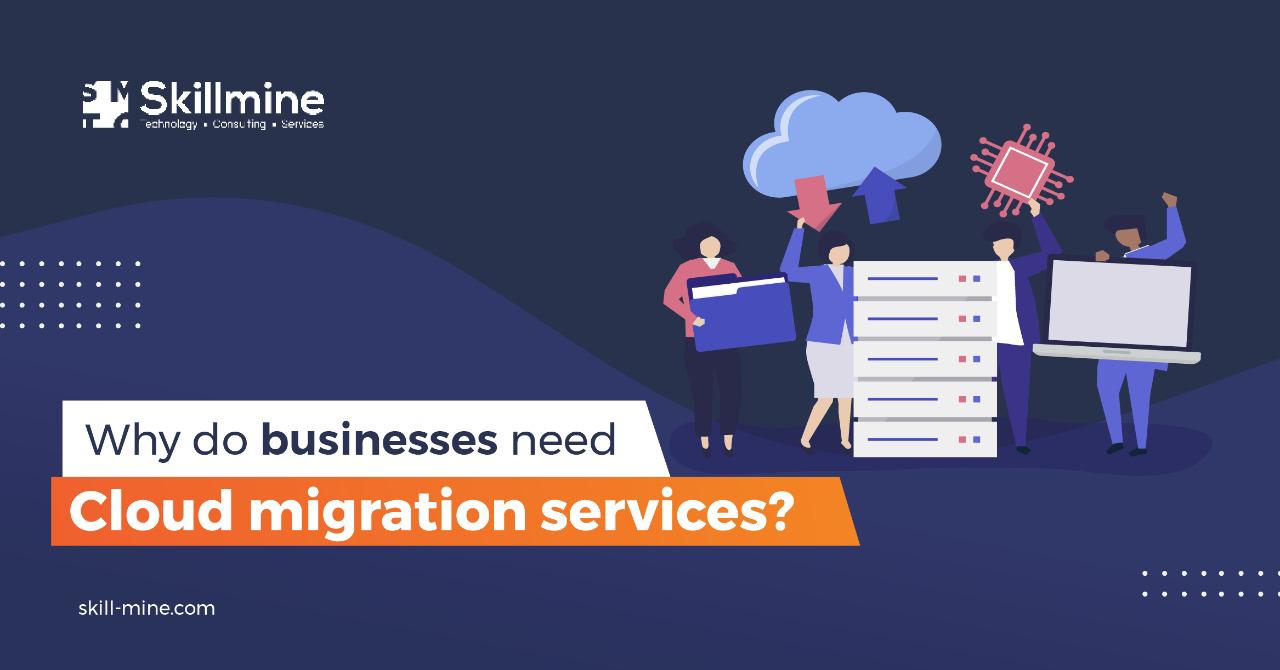A growing number of businesses have accelerated their move to the cloud in recent years due to the constantly changing economic environment. The cloud has helped companies become more innovative, flexible, and cost-effective in their daily operations. As more businesses transition to cloud-centric, more cost-effective operations, it has also heralded the end of traditional IT infrastructure.
Understanding what cloud migration and a cloud migration plan are, how the cloud may benefit your company, and what is required in making the change will help you decide whether or not the migration is essential, as well as how to select the best approach to ensure a seamless transition.
The cloud is increasingly critical to accomplishing complete digital transformation. It is also essential in assisting firms in innovating and outmanoeuvring economic uncertainties in a fast-shifting economic context.
So, what exactly is cloud technology, and why do businesses need it?
Cloud Technology
The cloud is a virtual space that exists on the Internet. It is a storage place where people put their digital assets, such as software, applications, and files. Simply put, we can say that the cloud is a virtual storage space on the Internet. Cloud computing enables anyone to access digital resources stored in virtual space via networks, most notably satellite networks.
Cloud Migration
Businesses wishing to transition away from old and inefficient legacy infrastructures, such as old servers or faulty security software, or to leave software assets or IT gear that is no longer running at full capacity, are increasingly turning to the cloud. To accomplish this, it is essential to have a cloud migration plan.
Cloud migration is the process through which a company moves some or all of its data capabilities, digital assets, services, databases, IT resources, and applications to the cloud. This is typically done to operate cloud-based infrastructure offered by public cloud service providers such as Google or Microsoft.
Many firms have already shifted from traditional IT infrastructure to the cloud. Enterprises are rapidly migrating to the cloud as they switch between providers. This is referred to as cloud-to-cloud migration.
Significance of Cloud Technology
The cloud is essential in business for obtaining real-time performance and efficiency upgrades. As a result, cloud migration necessitates careful planning, strategy, and research to verify that the solution you select is consistent with your company’s needs. It’s also crucial to examine your long-term ambitions and desires while deciding which course to choose.
Organizations have more freedom when using the cloud as opposed to hosting on a local server, on the whole. Additionally, if you need more bandwidth, a cloud-based service could be able to meet your needs right away rather than necessitating a complex (and expensive) update to your IT infrastructure. This additional freedom and flexibility may significantly impact the entire effectiveness of your business.
Why do businesses require Cloud Technology?
On-premise software solutions have now been surpassed by on-cloud computing. Since on-premise ERP solutions have limits in terms of simplicity and flexibility, most firms choose cloud computing. Cloud computing provides on-demand computing services ranging from application development to storage and processing power, typically through the internet and on a pay-as-you-go basis. Furthermore, cloud computing solutions are available from any location with an internet connection.
Cloud Migration Process
Cloud migration services has become a necessity for businesses aiming to modernize their operations, streamline IT processes, and achieve comprehensive digital transformation.
To ensure a smooth transition, organizations must adhere to a structured workflow focusing on thorough planning, meticulous execution, and subsequent optimization.
Assessment and Planning:
The initial phase of cloud transformation services involves meticulous planning, starting with articulating the business case for migration. Teams must assess the existing IT infrastructure, applications, and data to identify suitable candidates for migration while also addressing dependencies and potential challenges. This phase typically involves:
– Categorizing applications and data
– Analyzing application dependencies
– Evaluating security and compliance requirements
– Assessing performance and scalability needs
– Establishing migration goals and priorities
Selection of a Cloud Provider:
Once the assessment is complete, organizations need to choose an enterprise cloud transformation services provider that aligns with their business objectives. Factors such as compatibility with existing systems, service offerings, pricing, data sovereignty, and interoperability are crucial considerations.
Designing the Target Cloud Architecture:
This step involves designing the architecture of the target cloud environment, focusing on scalability, resilience, networking, security configurations, cloud service selection, cost-efficiency, and data backup mechanisms.
Migration Execution:
Teams then execute the migration process, which includes setting up the target cloud environment, provisioning resources, migrating data, and deploying applications according to the chosen migration strategy.
Testing and Validation:
Comprehensive testing is essential to ensure the functionality, performance, security, and user experience of migrated applications and data. Various testing methods are employed to validate different aspects of the migration.
Optimization and Maintenance:
Following successful migration, efforts shift towards optimizing cloud resources, installing security measures, setting up monitoring and governance processes, and streamlining resource usage. Continuous monitoring and optimization are crucial for long-term success, necessitating ongoing updates, security enhancements, scalability adjustments, and cost optimization measures.
Reasons why Cloud Technology is becoming a norm
Obsolete Technology
Most firms explore cloud migration because of old technology. Migrating to the cloud is a cost-effective solution for both large and small enterprises, particularly when compared to traditional IT infrastructure, which may be costly to administer and maintain in the long run.
Storage Space
From coping with a shortage of storage space to dealing with unruly, unreliable technology, staying ahead of the tech curve and keeping up with all the demands of a growing organization is never an easy chore. Migrating to cloud-centric technology is an excellent method to address many issues plaguing businesses that rely on traditional IT infrastructure. It also allows you more freedom and flexibility regarding scalability and managing your organization’s demands.
Non-flexible back-up plan
Having a disaster recovery strategy in place is critical nowadays for guaranteeing continuity in everyday business processes and getting back on track if a disruption occurs. Cloud computing makes it easier to develop a forward-thinking disaster recovery strategy, from offsite backups to cyber protection.
Overhead Costs
Working with a cloud provider and transitioning away from traditional infrastructure is an excellent method to reduce overhead costs. You will only be charged for the services you use each month. Also, since your company will not have to invest in the ongoing maintenance of IT infrastructure, you will be able to invest in other areas of the business that demand attention.
Remote working
As remote working becomes more common, cloud migration and computing services enable your staff to operate outside a consolidated workplace. Allowing your staff to work from home is an excellent way to raise morale and improve work-life balance.
What can businesses expect when they transition to the cloud technology?
Businesses of all sizes are migrating part or all of their data and apps to cloud computing environments to reap the many benefits. The following are the advantages that firms may get when they migrate their data to cloud technology.
- Flexibility
- Scalability
- Data security
- Disaster recovery
- Remote working
- Automatic updates
- Cost-effectiveness
- Ease manageability
- Increased collaboration
Conclusion
Seeking a solution to migrate your business to cloud technology? With more than a decade of experience in assisting companies of all sizes, Skillmine has a dedicated team that can assist in cloud consulting while assisting your business in every step of cloud migration. Book a meeting with us on how we could help your business transition from traditional IT infrastructure to Cloud technology.
Looking for expert technology consulting services? Contact us today.





